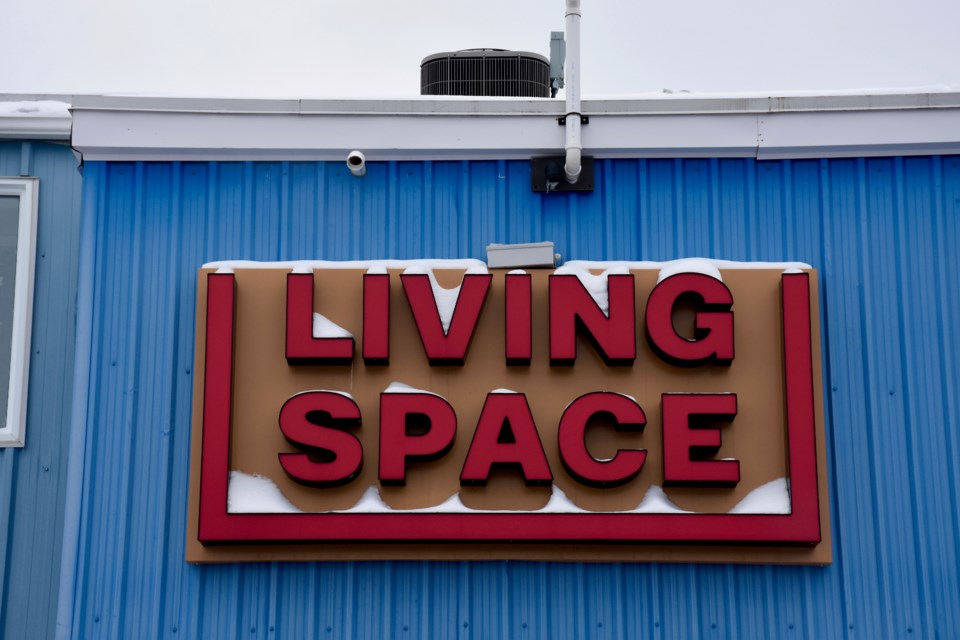TIMMINS - As the city looks at a potential alternative to encampments, the services board CAO is uncertain who would run it.
At the Cochrane District Services Board (CDSB) meeting on Thursday (Feb. 20), members talked about the housing, outreach, protection, and engagement (HOPE) initiative.
The project launched at the Timmins council meeting on Tuesday and is being looked at as a way to temporarily house people experiencing homelessness. The province is providing over $3.1 million in capital funding, but the commitment doesn't include ongoing operating cash.
If approved, it would create a designated space for a mining camp-type setup or other modular housing.
The City of Timmins is leading the public consultation process to determine a location on municipally owned land. Thursday, CDSB talked about the sustainability of the initiative.
“We continue to be available and to support that process in any way that we can,” said Christine Heavens, CDSB’s director of community development and services.
“In the meantime, we’ve collected service providers to the table and brought them up to speed with respect to the initiative and with respect to the process.”
While the city would own the land, CDSB CAO Brian Marks said the services board would own the structure. There is still uncertainty about who will run the facility.
“Between now and when the operation opens, we need to work with service providers — whether it’s mental health, addiction services, food services, or security — to figure out how we're going to pay for that,” Marks said.
“It doesn't come with any operating, which means if we're going to support it through existing HPP (homelessness prevention program) funds, some services will be cut. Some service providers will need to lose money, and we'll have to budget for that to support this facility.”
CDSB chair and Timmins Mayor Michelle Boileau said that while the city does public consultation, CDSB will move ahead with a request for proposals (RFP) for mobile modular structures.
“This will provide insight into facility costs, ensuring we have proposals ready if a location is selected,” she said.
At this point, Timmins council has only approved a public process to gather feedback on potential locations. That information will be shared with council members before they make a decision.
If the project moves ahead, the three options Timmins council has been given are to maintain the status quo, use city-owned land for HOPE for a 40-unit complex, or a 40-unit HOPE complex that integrates the Living Space relocation into it.
At the CDSB meeting, Timmins Coun. Steve Black brought to light past initiatives where partnerships were uncertain or inconsistent.
“We’ve seen situations where partners were in and out, and I need to know exactly who will run this facility before I can confidently support it,” he said.
Black also asked whether the relocation of the emergency shelter Living Space was being considered as part of the initiative.
“The ability to relocate Living Space is obviously contingent upon the parcel that's selected, and I'm not sure the degree to which that is included in the public consultation exercise to be completed within the next three weeks, because that's a different consultation,” Marks said.
“But that said, we're trying to maximize the number of units we can procure with the available funding because we will need more than 40. And, unfortunately, not seeing any changes at the provincial or federal level with regard to economic policy, minimum income, basic income, I don't see a decline in homelessness.”
Marks said Living Space is at capacity with 63 people per night, and adding 40 more units will require additional resources beyond what is currently available for relocation.
“But that is preferred given the fact that it would be easier to serve and manage services in one location versus two. So, to answer your question, Coun. Black, that is absolutely always a consideration that we would want to relocate to one location,” he said.
Timmins Coun. John Curley, who voted against the encampment motion at the council meeting, asked what would happen to the current building Living Space is operating out of if it co-locates with this new initiative.
Boileau said CDSB could choose to repurpose or sell the current shelter property. Black suggested that funds from a potential sale could help support the relocation effort.
The HOPE initiative is being discussed because the CDSB received $3.1 million last month to create emergency shelter spaces and affordable housing units. It was publicly announced on the same day Timmins' application for a Homelessness and Addiction Recovery Treatment (HART) Hub was denied.
Four municipally owned properties have been identified and will be shared on Monday, Feb. 24 when the public consultation starts. That runs until March 14.
A summary of each location and how it meets the criteria will be available and will be posted on the city website, along with a short survey and feedback form. A printed version of the survey will also be available in English and French at Service Timmins.
The timeline for action is tight. The city and CDSB must finalize a location and submit a signed agreement to the province by March 21.
